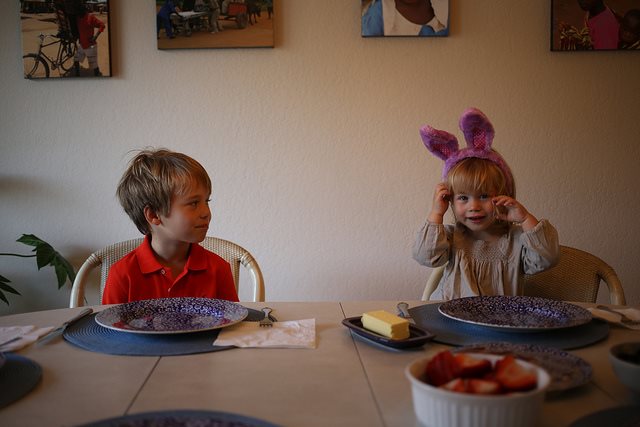
Thematic Analysis 101
Three of our PSG groups are using thematic analysis to make sense of information that they are gathering for their research. But what is thematic analysis and how do we do it?
In steps Nicky Human who uses and teaches thematic analysis in her own work in psychology and is also a member of Big Birthas Parenting Science Gang. She gave us a quick run through what we’d need to do and answered all of our questions.
Image by Nikhita S on Unsplash
Step 1 – Familiarise yourself with the data and jot down thoughts
Step 2 – Collect evidence for each theme
PSG A: Hi Nicky! Thanks for coming. Could you just tell us a bit about your work and how you use thematic analysis?
Nicky: Sure: I personally tend to use discourse analysis in my own work (I’m busy wrapping up my PhD); but I have been working for a few years now supervising Psychology Honours research projects. A lot of the students I worked with have used thematic analysis, so part of my job is teaching them how to use it 🙂
PSG A: Thanks! That sounds like very useful experience for our purposes:-). What do you find are the things your students get wrong, or have trouble with? Is there anything they commonly say afterwards that they wish they’d done differently?
Nicky: Haha, usually allowing enough time to do it in. Transcribing takes a long time; and analysis itself is like doing brain-gymnastics. It’s the most exciting thing in the world (for me at least), but it is time-consuming.
PSG A: So we should probably have started six months ago?:-)
Step One – Familiarise yourself with the data and jot down thoughts
Nicky: Well, as we read in the post yesterday, the first step is just to read over the data to familiarise yourself with it. This process can begin during transcribing. As you read, you jot down any thoughts or ideas that come to you.
So if you imagine the data set as a ball pit, the idea normally is to generate themes inductively – so read through the data pretending you have never seen a ball pit and don’t know what colour balls will be, and then you let the data ‘speak to you’, to figure out what colour balls there are
The alternative is to generate them deductively – if you know what colours to expect. This is used in qualitative analysis, but the school of thought that typically uses thematic analysis tends to prefer the inductive approach
PSG B: Can I ask why?
PSG C: I’m assuming that’s because you are less likely to go I to the analysis with preconceived ideas of what you will find?
Nicky: Exactly! You avoid imposing your own take on the data, so it’s an effort to be more neutral and improve validity
PSG B: Thank you. What I thought too but wanted to double check. 🙂
PSG D: Can we create ourselves a pretend research question to work with? Like: “People’s reflections on meeting a unicorn”?
So in this case deductive generation would be starting with looking for people thoughts on the look, feel, smell of the unicorn.
Nicky: Deductive there would be assuming people will comment on the beauty of it’s horn; and then looking for that in the data set.
This approach works when you have reasonable evidence (e.g. based on other studies) that you will find that in your own study; but then you could ask why do a qualitative study then, when you could just do a questionnaire?
The school of thought I come from basically would argue that it’s good to use a mixed approach – know what to expect but be open to finding new things, and try not to let preconceived ideas and expectations get in the way
PSG A: Is this the same as ‘grounded theory’?
Nicky: I don’t want to mis-speak, because I’m not very familiar with grounded theory, but yes, I do think they use a highly inductive approach, so there are some similarities there. There are other key methodological differences though.
PSG A: Thanks! I don’t know much about it but someone we talked to ages ago used the term, and the only thing I really grasped was that they looked at the data and let patterns emerge from it, I think. So it sounded a bit similar to what you were saying. I wasn’t sure if it was the same thing just using a different term.
Nicky: You are spot on! That part of the process is the same.
Briefly, the difference is that with thematic, we collect all our data and then start analysing. But with grounded they will collect a piece of data, analyse, come up with a starting theory, use that theory to design the next interview/stage of data collection, analyse, refine theory, collect more data, repeat! 🙂
PSG D: The oracles of thematic analysis (Braun and Clarke) have quite a bit to say about the difference between grounded theory and thematic analysis. But I’m not sure how much of it I really get….
https://tinyurl.com/grounded-or-thematic
Step 2 – Collect evidence for each theme
Nicky: So the first step was to identify possible ideas in the data set (i.e., like identifying the colours of the balls). The next step is to start collecting the evidence – if you imagine taking the balls and sorting them into piles according to colour.
Here, you want to try and identify all the bits of the data that fit under this specific theme. At this stage, it can help to have a table; where column one, row 1 is the name of a theme; column two is the first interview (and column 2, row 1 is all the instances/examples that fit that particular theme); column 3 is the second interview, column 4 third interview, etc (or however you want to organise it, that’s just an example). This helps to get all the examples that fit under that theme in one place.
Once you’ve gone through the first interview, and “sorted the balls into their colours” (i.e. identified themes, and bits of the data that fit under that theme); you then go through the next interview and repeat the process.
If you find a new theme, you add that to your list (and should really go back to check the first interview to see if there are any examples of it there). Repeat, until you have gone through all of the interviews.
PSG E: That’s soooo time consuming!
Nicky: I think it’s sounding worse than it is! I can normally sit with a student and identify a few central themes and do a basic thematic map on how they fit together in an hour.
PSG A: Would you do that based on one interview, or reading through several?
Nicky: Skim reading one long one or a few short ones. I do this just as a way to teach them how to do it and to get them started.
PSG D: Nicky – can you give us some examples of ideas vs evidence?
Nicky: Sorry, I was using those two terms inter-changeably there, I see! What I meant, was to liken the theme to an idea, because at this point it is quite ephemeral.
But you use it as a guiding point to find anything else similar throughout the data that could back up or prove this ‘idea’ is more than that – it’s a theme (and the quotes from participants to back this up is your evidence). E.g. if one participant refers to meeting a unicorn as magical; you could then use that term to find any other examples of where participants brought in the idea of magic or the supernatural to describe the experience. Hope that helps?
PSG D: Yes! that makes perfect sense.
Step 3 – Organise the themes
Nicky: The next step is to organise the themes. As I mentioned above, a table can be very helpful, because it has all of the quotes that fit that theme all in one place, from all the interviews. This is helpful, because the next task is to figure out what each theme is about.
So, if you imagine you can tell that your pile of balls are a similar colour, but you haven’t figured out that they are all red. (Hm, I feel like I’m pushing this example a little too far! Apologies if that is the case!!!) But this stage now involves looking through the data you have collected in one place, to figure out what each theme is about
PSG A: How do you know when you have enough themes? I mean, I can imagine that you might have a handful of things that most interviewees talk about, and that seem to be significant. But then how detailed do you go with looking at the remaining ‘misc’ stuff? Does it just really depend on how much time you have?
Nicky: Good question! With qualitative, remember it’s not really about quantity.
So sometimes a really important theme may not have been talked about by everyone, but who talked about it could tell you something important. E.g. if only two people talk about the unicorn wanting to sit next to them, and it turns out they are the only virgins of the participants, then you have just provided evidence for the old myth about how to catch a unicorn, right?
I think generally the advice is, at the early stage when you are generating themes, is to try and be as inclusive as you can be, because it’s only once you’ve gone through the whole data set, done the thematic map and started thinking back to literature, that the significance of certain themes start to emerge.
PSG F: This all seems really subjective!
PSG D: I think that’s kinda the point. Maybe. Every analysis is different depending on who does it?
Nicky: Very true! It is a subjective process – the researcher is literally ‘the tool of analysis’, but there are checks and balances we can use to improve the validity and reliability of it. Having a team of people working on this immediately does help to some degree.
Nicky: I have a resource I can refer you to, to learn about how to do quality qualitative research 🙂
PSG A: Yes please!
Nicky: The reference is a chapter on validity and reliability in the following book: Silverman, D. (2013). Doing Qualitative Research: A Practical Handbook. (4th ed.) Los Angeles: Sage Publications
If you look for it in Google Books, most of that chapter appears. (go to page 209)
PSG I: Love Silverman… it’s basically the qual bible ?
Nicky: Absolutely!!!!
Step 3a – Map out the themes
Nicky: A really helpful step that I always do at this point is to draw a thematic map. This helps to figure out the bigger picture, by looking at how the themes relate to each other.
At this stage, it also helps to think back to the literature we have read. Figure out the inter-relationships as well as our data’s relationship to existing data, will help us decide what is the most important themes we have found. It also can help us decide in what order to write things up.
PSG A: This sounds very sensible, but I’m struggling to imagine what it means in practice. Say we’ve got all these transcripts about meeting unicorns. Some people have talked a lot about the unicorn’s horn, some people have talked about how excited meeting a unicorn made them feel. Some people have talked about both, some neither. Is there necessarily a relationship between those two ‘themes’? How would we determine it?
Nicky: It is entirely possible that there may not be! That is where having the table of themes can help; because you can glance over all the examples of how the theme has been used (or operationalised, to sound poncy), and that can remind you quickly about the content of the theme.
So if part of the wonder of the unicorn was in realising it had a horn and so was not just a horse, then you could link those two themes together. Or they could be unrelated!
In my experience though, most of the time the key themes will be related to each other (and that comes back to the design of the study and the interview questions, as having been designed to achieve a particular goal; so because there is some structure to the study, you will find that most of the themes will relate to each other)
Step 4 – Write it up
Nicky: And then finally: The writing up!
Once we’ve figured out what order to write about the themes in; we introduce a theme (summarise the key aspect of it); give data as ‘evidence’ of the theme; interpret the data linking it to existing literature on the same topic where possible; and then link to/introduce the next theme.
General questions
PSG D: This all sounds deceptively simple! I’m sure it won’t be once we get started. What do you think are the common pitfalls?
PSG B: I would imagine that getting bogged down in the minutiae of ‘what’s a theme’ and ‘where does this quote fit?’ might get out of hand perhaps?
Nicky: Definitely! I’m terribly pedantic, and fell into that trap with my own PhD for literally about two years, where I felt driven to do every step ‘properly’ (The upside is that my validity and reliability section is completely truthful).
The idea, I think, is to balance practical reality (of not getting bogged down with detail) with trying to follow acceptable standards of qualitative research to make sure the study is as scientific and non-biased as possible.
PSG D: Yes – that. Or us trying to infer too much from a quote eg if the unicorn seeing person said “I didn’t want to touch it” I don’t really know how we deal with that if they don’t tell us why.
I guess the only thing we can do is put it in a theme of “not wanting to touch the unicorn”
Nicky: That can also be helped through the reading I refer to above, by Silverman. There are a number of things one can do to help make sure the study is not too subjective, and that we are consistent in the way we search out themes and include cases under them.
PSG G: I think it would be really helpful for several of us to practice on a small data set, and compare what we get.
Nicky: When we get in the real data, a good check will be to get three or four people to read through it and code for themes, and then compare what we get. If you guys want to practice, that’s cool, but I would think it’s fine to learn on the job! Being a member of the group anyway, I’m also always happy to weigh in (as soon as I get my PhD in!!)
Thanks so much Nicky for all your help with this – we all feel much more up to the challenge now.
If you want to get involved in providing the information that we are going to analyse, check out the Big Birthas Research plan.


